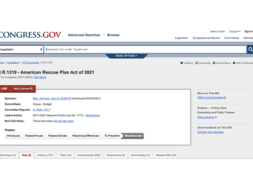
Conversion of a Postsecondary Educational Institution from a For-Profit to a Nonprofit, Tax-Exempt Entity
By Cooley LLP
This information is a general description of the law; it is not intended to provide specific legal advice nor is it intended to create an attorney-client relationship with Cooley LLP. Before taking any action on this information you should seek professional counsel.
The recent announcements that Grand Canyon University would explore nonprofit status and that Corinthian Colleges plans to sell a group of schools to a nonprofit entity have encouraged higher education companies to take a fresh look at conversion into a nonprofit entity. These announcements, along with the challenges posed to for-profit institutions by the recently promulgated gainful employment regulations, have renewed interest among higher education sector participants in the advantages of converting their schools into entities that would be exempt from taxation pursuant to Section 501(c)(3) of the Internal Revenue Code (“IRC”) and would be beyond the scope of certain regulations issued by the U.S. Department of Education (“ED”) that apply particularly to for-profit institutions.
This alert1 outlines the regulatory and tax concerns in converting a postsecondary educational institution (the “Institution”) into a nonprofit entity. Such an entity is commonly referred to as a “public charity.”2 For the purposes of this memorandum, it is assumed that the Institution is a participant in the federal student financial assistance programs pursuant to Title IV of the Higher Education Act of 1965, as amended (“Title IV”), and is authorized to operate by a state and accredited by an accrediting commission recognized by the U.S. Secretary of Education.
There are three primary ways to achieve such a conversion: the assets of the Institution can be transferred to a new nonprofit entity, acquired by an existing nonprofit educational institution, or acquired by an existing nonprofit entity that is not an institution.3
For the reasons described in the footnote below,4 we do not discuss a stock purchase as a viable option. Similarly, we do not discuss so-called “B” corporations—also known as “benefit corporations”—a newly emerging form of for-profit entity that permits a company to pursue “public benefit” purposes other than value maximization for stockholders, as such entities are not otherwise Section 501(c)(3) organizations and thus do not qualify for the Title IV regulatory relief available to public charities.
In each of the three alternatives described above, the owner of the assets of the Institution (the “Company”) may sell all or some part of the assets of the Institution to the nonprofit, or may effectuate the transaction by charitable gift or by part-sale/part-gift. Generally, the conversion transaction involves the issuance by the nonprofit transferee entity of debt instruments to the Company or its owners, as the nonprofit is unlikely to have cash available at closing to pay for the Institution assets that are being acquired. Separate and apart from the transfer of assets to the nonprofit entity, once assets are transferred, a contractual and/or license arrangement may be entered into with the nonprofit to provide, on arm’s-length terms, products and/or services to the nonprofit that are other than the core academic services that the Institution must provide directly pursuant to education law. The federal tax implications of each of these alternatives are summarized below. We also discuss the issues raised by such a transaction with regard to continued participation in the Title IV programs, maintenance of institutional and specialized accreditation, state authorization, and oversight by state attorneys general.
Internal Revenue Service (“IRS”) review issues
Of the three structural alternatives, the transfer of the assets of the Institution to an existing nonprofit, tax-exempt entity (and preferably one that is either an existing educational institution or at a minimum already has an educational purpose) is the most desirable from the perspective of minimizing regulatory burden. Indeed, if the assets of the Institution can be transferred to an existing tax-exempt public charity, separate IRS approval would not typically be required. Instead, the nonprofit entity to which the Institution’s assets are transferred would simply report any change in its operations, governance, and material contractual relationships (specifically including those with the transferor), in its Annual Information Return filed on IRS Form 990. The Form 990 must be filed within ten and one-half months following the end of the entity’s fiscal year in which the transaction occurred.
Even in this alternative, however, the parties must plan to meet the IRS requirement that the nonprofit entity be governed by a majority of independent trustees or directors.
Alternatively, if the Institution were to be embedded in a newly created nonprofit entity (or reorganized as a nonprofit via a “conversion-in-place”), an application for recognition as a tax-exempt Section 501(c)(3) organization would need to be filed with and approved by the IRS. In our experience, securing such an IRS determination letter commonly requires at least six months, and given the elements that the IRS may wish to examine, the time frame for such approval may be materially longer.5 Indeed, the nature of a transaction involving the conveyance of a for-profit enterprise to a nonprofit entity with a for-profit related party having a contractual relationship with the nonprofit removes the application from the ordinary processing queue and virtually guarantees a longer IRS review period.
Whether the Company transfers the Institution’s assets to an existing nonprofit or to a new nonprofit, the sale should be supported by at least one (and preferably more than one) written appraisal of the transferred assets issued by a qualified independent appraiser. The sale will be a taxable transaction to the Company (assuming the assets are appreciated assets) and, absent a services agreement going forward, will limit the Company’s ability to participate in the future growth of the business.
Sale of the assets of the Institution to an existing educational institution is the safest approach from a tax perspective because the transaction should be regarded as an arm’s-length transaction by the IRS and the state attorney general with jurisdiction over the transaction. While finding an educational institution willing to pay full fair market value for the business may be challenging, a properly constructed seller note could meet this need.
As discussed above, sale of the assets of the Institution to a newly formed nonprofit (or a “conversion-in-place” strategy) is a riskier approach in that it is likely to draw the attention of the IRS when the federal tax exemption application is filed. An applicant for federal tax exemption is required to identify its directors and officers and to describe any material contracts that it has or anticipates having. This would include a note payable by the applicant to the Company. Although representation by the Company on the board of the nonprofit is not prohibited, it would likely result in greater IRS scrutiny. In any event, the board of the nonprofit would have to consist of a majority of persons who are independent of the Company.
Regardless of whether the transfer is to a new or an existing nonprofit entity, it is possible for the Company to continue to provide services and/or products to the Institution, provided that the Institution continues to provide the core academic (and potentially certain administrative and student support) services itself and the services are provided by the Company to the Institution at no more than fair market value. However, this sort of contract may attract IRS attention under any circumstances, and particularly where a new application for recognition must be filed.
The process of implementation can be complex and requires a carefully defined sequence of steps, as follows:
- Determine the availability of an existing Section 501(c)(3) organization, either an existing educational institution or a nonprofit that is not an educational institution but has the proper tax classification.
- If none, form a new nonprofit organization (or prepare to effect a “conversion-in-place” of the Company from a for-profit to a nonprofit entity if permitted under applicable state law) and file an application with the IRS for recognition as a Section 501(c)(3) tax-exempt organization.
- Secure one or more written appraisals from qualified independent appraisers determining the fair market value of the assets of the Institution.
- Contract with the nonprofit organization for the purchase of the assets of the Institution. To secure a presumption that the contract purchase price is fair, the governing board of the nonprofit must have a written appraisal in hand when it approves the contract. It is also important that the governing board of the nonprofit be free of any persons who may have a conflict of interest or the appearance of a conflict. If any such person is on the board of the nonprofit, he or she must scrupulously abstain from participating in the board’s discussion and vote on the matter.
- As appropriate, enter into an arm’s-length, fair market value agreement with the nonprofit to provide “non-core” support services.
U.S. Department of Education review issues
An institution that participates in the Title IV programs is subject to a complex web of laws, regulations, and interpretive guidance.
U.S. Department of Education regulations specify that conversion from a for-profit to a nonprofit form of ownership (or vice versa) constitutes a change of ownership resulting in a change of control (“COO”).6
ED regulations state that when an institution undergoes a COO, absent ED’s express approval, that institution “ceases to qualify as an eligible institution [for Title IV funds]”7 and therefore would, at the closing date, lose Title IV eligibility. In practice, however, ED has established a procedure through which an institution that is about to undergo a COO may obtain a pre-closing assurance that, post-closing, ED will issue a provisional extension of eligibility until the institution re-establishes full eligibility under ED regulations, and that, upon closing, ED will issue a Temporary Provisional Program Participation Agreement (“TPPPA”) that will preserve Title IV eligibility until a Provisional Program Participation Agreement (“PPPA”) is issued.
The process for securing approval of a COO of the Institution, including a COO involving a change to a nonprofit entity, involves three stages. The first is a pre-acquisition review by ED confirming that the Institution’s application for approval of the COO is “materially complete,” and that there is nothing in the Institution’s or the buyer’s compliance or administrative history8 that would prevent ED from recertifying the Institution under the new ownership. If the Institution meets these tests, ED will issue a letter affirming that, post-closing, it will issue a temporary extension of Title IV eligibility based on the TPPPA. The second is a period of temporary certification following the transaction during which certain post-closing submissions must be made. The third involves the issuance of a new PPPA.
While not strictly required, it is strongly recommended that an Institution file a pre-acquisition review application at least 45 days before the anticipated closing date. If there are any unusual characteristics or complexities, an even earlier application is advisable. The pre-acquisition review application includes basic information about the Institution as it will operate immediately following the sale, including the nature of the buyer (i.e., for-profit, nonprofit, or public), the buyer’s ownership structure, the name, address, taxpayer identification number, and, in the case of a for-profit entity (and certain nonprofit membership corporations), the percentage of ownership (or membership interest) of each person or entity that directly or indirectly holds a 25% interest in the entity. The application also requires information as to the executive management and membership of the board of directors (or trustees) of the entity immediately following the transaction.
Certain documents must be submitted to accompany the pre-acquisition application:
- State and accrediting agency approvals for the Institution as it operated prior to the transaction and, if available, advance agency approvals for continuing operation under the new ownership. It is particularly important that state and accreditor approvals of every campus, including the exact address of that campus, be consistent with each other and with ED’s records.
- Audited financial statements for the Institution and the buyer for the two most recently completed fiscal years. Note that the pre-acquisition application does not include any information pertaining to the financial condition of the Institution or buyer following the change of ownership. As a general matter, ED assigns little or no weight to any pro forma financial statements or projections that might be prepared in advance of a transaction. Rather, at this stage, ED bases its review of the financial responsibility of the Institution and the new ownership entity solely on the basis of the audited financial statements of the Institution and of the new ownership entity for the two prior years.
- Certification confirming that the information in the application is true and correct. The buyer does not file the purchase agreement, loan agreement, or any other transactional document at this stage, but simply certifies that the description of the transaction in the application is accurate.
Next, the ED Case Team responsible for the geographic region where the main campus of the Institution is located reviews the application and advises the Institution whether there are any issues to be addressed for the application to be considered complete. When the Case Team has completed its initial review and recommendation, the application is also forwarded to ED Headquarters where it is considered by a “Review Panel” consisting of senior ED staff from Federal Student Aid and the Office of General Counsel, which particularly examines financial responsibility and any regulatory obstructions to approval.
Based on this review, ED issues a letter that not only informs the Institution and the buyer whether there is “reasonable assurance”9 that ED will approve the COO and continue Title IV eligibility after the closing date, but also whether post-closing, the Institution will be subject to any special restrictions, particularly relating to the posting of a letter of credit and to “growth restrictions” that limit the initiation of new programs and locations.
Generally, these restrictions and letter of credit conditions arise from factors specific to the buyer, and most often relate to the inability of the buyer to provide two years of audited financial statements for the acquiring entity. In that circumstance, the growth restrictions generally range from 18 to 30 months. In addition, the letter of credit is usually equal to 25% of the total Title IV federal student aid received by the students enrolled at the Institution during the course of its prior fiscal year.10 In an asset purchase by an existing tax-exempt organization that is not an educational institution, the organization’s financial statements for the two most recently completed fiscal years would probably meet the minimal requirement. Sometimes, however, ED rejects such financial statements because they do not demonstrate that the buyer has a sufficient financial and operational track record. A newly formed tax-exempt entity would not have the required two years of audited financial statements and therefore should expect growth restrictions and a letter of credit.
If ED’s proposed restrictions appear unreasonable or excessive, or appear inconsistent with the applicable regulations, the Institution may enter into further negotiations with ED. The issuance of an affirmative pre-acquisition review provides assurance that the Institution’s eligibility will continue after the closing date of the transaction.
Within 10 business days of the closing of the transaction, the Institution must notify ED (usually through the electronic application process) that the transaction has occurred and request the issuance of a TPPPA to continue the Institution’s eligibility while the buyer prepares the post-closing application materials and ED completes its review of the full application.
After the TPPPA is signed by the Institution and counter-signed by ED, the Institution continues to be certified until the last day of the month following the month in which the closing occurs (up to 61 days). During this period, the new owner must obtain and file with ED certain additional information, including the following documentation:
- Evidence of authorization of each state within which the Institution is located for the Institution to operate in that state under the new ownership.
- Evidence of approval of the institutional accrediting agency confirming the continued accreditation of the Institution under the new ownership.
- A student loan default management plan.
- An opening-day audited balance sheet of the Institution (and occasionally a higher level entity).
So long as the required documents are filed in a timely manner, the Institution’s TPPPA will be extended on a month-to-month basis until ED completes its review of the new owner’s application.
After the Institution has filed all of the post-closing documents referenced above, ED will complete its review and issue a PPPA, which extends the Institution’s Title IV eligibility for up to three years.
The post-closing review primarily revolves around the “financial responsibility” of the Institution based on the opening day balance sheet as referenced above. The Institution must meet two simplified tests of financial status—a positive unrestricted current fund balance (which generally excludes the value of goodwill and other intangibles) and a 1:1 “acid test” ratio (counting only cash, cash equivalents and current receivables on the asset side). Failure to meet either such test does not result in a loss of approval; rather, ED will require that the Institution either post a letter of credit (“LOC”) for 50% (or more) of the prior year’s Title IV disbursements or post an LOC of 10% (or more) and accept certain post-disbursement reporting requirements (referred to as “Heightened Case Management Level I,” which entails additional reporting but does not materially affect the flow or timing of the federal funds). While the 50% LOC option technically renders the Institution “financially responsible,” for obvious reasons it is rarely elected. Note that, if the Institution has already posted a 25% LOC due to the buyer’s inability to provide two years of audited financial statements, ED may accept that as sufficient or may increase the amount of that LOC based on any shortcomings in the opening day balance sheet.
Finally, note that in renewing the participation of the Institution after a conversion from for-profit to nonprofit, ED’s position is that the “90/10 Rule”11 applies to the fiscal year in which the conversion takes place and the Institution’s first full fiscal year of operations as a nonprofit institution.
This is notwithstanding that, pursuant to applicable law, the 90/10 Rule applies only to proprietary institutions. In taking this position, ED accomplishes what on first blush appears to be a circumvention of a clear statutory mandate by incorporating this provision as a condition to the PPPA, which arguably would make compliance a contractual obligation assumed by the Institution as a condition of renewed eligibility. In a 1998 ruling, one federal appeals court upheld ED’s position; however, in our view ED’s position could still be subject to challenge.12 It remains to be seen whether ED will follow the same model and extend the recently issued Gainful Employment Rules to newly converted nonprofits for a limited period following conversion.
ED’s approach to for-profit to nonprofit conversions continues to evolve, and there are a number of issues that have emerged as ED evaluates conversion transactions.
State authorization review issues
A change in form from for-profit to nonprofit would in almost all cases be defined as a change of ownership under state law.13 In most states, the authorized (i.e., selling) institution must submit an application for approval of a change of form and/or ownership sufficiently in advance of the closing to allow for processing. Written notification would typically require a description of the anticipated effects of the change upon the institution’s name, purpose, programs, personnel, administrative organization, finances, and other standards for licensure, and upon its accredited status—as well as other documentation and assurances. The most sensitive issue may be assuring the state agency that the financial condition of the Institution remains sound following conversion. It is extremely important to confer with state agency staff to make sure the proper procedures are being followed.
Depending on the jurisdiction, following staff review of the application for substantive change, interim approval may be granted and a provisional license may be issued, with final approval occurring post-closing. A staff visit is likely to be required before a final license is granted. The variation among the states is so enormous that attempting to describe an “average” approval process is not feasible. The Cooley State Authorization Service tracks all state laws, regulations and processes and provides a clear guide to the intricacies of the process.14
Institutional and specialized accreditation review issues
The change of ownership standards vary depending on the accreditor, the form of entity of the Institution prior to the transaction and the effective control following the transfer. A change from a for-profit entity to a nonprofit entity would almost certainly constitute a change of ownership or control under the agency’s substantive change policies.
Accrediting agencies typically require advance notice, and some require advance approval, of a planned change of ownership or control
As in the case of dealing with state agencies, it is always prudent to seek advance informal consultations with the agency staff.
The accrediting agency must have procedures to review and temporarily reinstate the grant of accreditation even if its governing body is not in session. Accrediting bodies recognized by the Secretary of Education are required to conduct a follow-up visit to the Institution within six months of the closing of the transaction. It is important to recognize that any lapse in institutional accreditation can adversely affect continuing Title IV eligibility.
State attorney general review issues
As a general rule, a state attorney general (“AG”) has broad authority over the use of charitable assets in the state in which he or she has jurisdiction. The AG’s office typically has the authority to intervene when it believes that charitable assets are being misused or otherwise transferred in a manner inconsistent with the public interest. This is particularly the case where there is a nonprofit to for-profit conversion. Where a for-profit entity is transformed in whole or part to nonprofit, the AG may examine whether the price paid by the nonprofit for the assets of the for-profit institution is reasonable, and whether all of the terms of the transaction, taken together, are consistent with the public purpose of the resulting nonprofit entity. This is similar to the review that the IRS would conduct; however, the procedures and policies of attorneys general vary widely, as do their interest in particular situations. Advance review of state policies and discussion with staff in the AG office may be desirable.
About Cooley LLP The attorneys in Cooley’s Higher Education practice have advised clients on the conversion process and are experts on the regulatory procedures, as well as the corporate, securities, and tax issues necessary to implement the transition. Please do not hesitate to call us if you would like to discuss any of the subjects discussed in this alert.
Contact Information:Jonathon C. Glass // Washington, DC // (202) 776-2691 // jglass@cooley.com
Contact Information:Edward J. O’Connell // Washington, DC // (202) 776-2639 // eoconnell@cooley.com
Citation
1Pursuant to Sections 10.35(b)(4) and (5) of IRS Circular 230 (31 C.F.R. Part 10), we advise you that this memorandum is not intended to be used, and cannot be used, by you for the purpose of avoiding any U.S. tax penalties that may be imposed on you, or for the purpose of promoting, marketing, or recommending to another party any transaction or matter addressed herein.
2For the purposes of this analysis, the terms “tax-exempt” and “public charity” will be used interchangeably to refer to an organization that is exempt from federal income tax pursuant to IRC Section 501(c)(3) and would be defined as a “public charity” pursuant to IRC Section 509(a)(1), (2) or (3).
3Another option is to effect a “conversion-in-place,” under which the existing entity that owns the Institution, to the extent permitted under applicable state law, approves changes to its governing documents so as to conform with requirements applicable to a public charity, applies for to the IRS for tax-exempt status, and concurrently with receiving such approval, converts the existing entity to nonprofit form.
4If a nonprofit tax-exempt entity were to acquire the stock of a for-profit entity, the result would be two entities: the nonprofit and its wholly owned subsidiary that holds the assets of the Institution. The Institution would then need to be brought into and made a part of the nonprofit tax-exempt parent in order to derive the intended Title IV benefits. Transferring the assets of the Institution from a for-profit subsidiary to the nonprofit parent is itself a taxable event (unless the nonprofit uses the assets in an unrelated business that generates UBTI, which would appear self-defeating).
5“Expedited” processing may be granted by the IRS if a grantor has stated in writing that a charitable grant to the applicant is contingent upon the applicant having an IRS determination letter by a certain imminent date, but there are no assurances that the IRS will follow an expedited process.
634 C.F.R. § 600.31(d)(7).
734 C.F.R. § 600.31(a)(2).
8ED may decline to approve a COO if a person with a designated ownership interest or other attributes of control has been subject to a federal debarment or otherwise personally disqualified. ED may impose financial limitations on the Institution arising from other characteristics of a control person’s “past performance.” 34 C.F.R. § 668.174.
9While the “reasonable assurance” included in the pre-acquisition review does not constitute a binding formal approval, absent an inaccuracy in the submission made by the institution, any material change in ED’s position subsequent to closing would be unusual (although not unprecedented, especially as it relates to a request for a letter of credit).
10The calculated amount includes amounts paid in the form of grants (primarily Pell), the federal share of Work-Study support, and the principal amount of Title IV student loans made during the period.
11The 90/10 Rule provides, broadly, that an institution must demonstrate that it annually, on a cash basis, receives at least 10% of its applicable revenues from other than Title IV sources.
12The U.S. Court of Appeals for the 10th Circuit permitted ED to apply the 90/10 Rule to newly converted nonprofits, reversing the decision of the district court that held that the plain statutory language prevented such an interpretation. The 10th Circuit remanded the case to the district court for further proceedings, which never took place. See Mission Group Kansas, Inc., v. Riley, 146 F.3d 775 (10th Cir. 1998).
13While not discussed here, programs offered by the Institution that result in professional licensure may also necessitate approval of the applicable state professional licensure agencies.
14Please see www.cooley.com/stateauthorization for further information.










